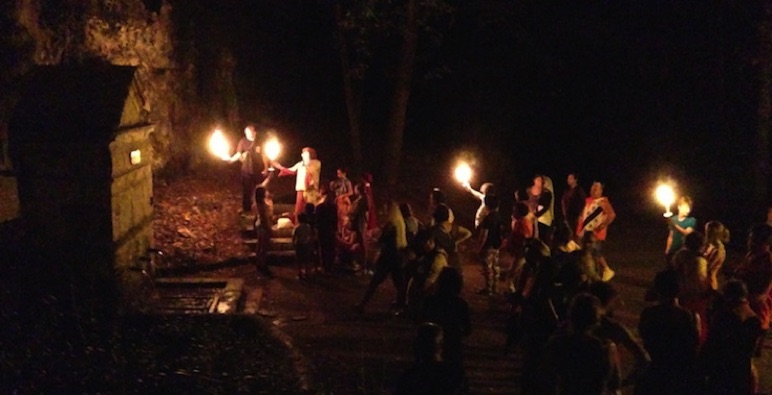
Wednesday 12 Aug - late rise, Henry IV Palace, Garenne walk, night walk
After the Night Market ran well past midnight, with some people still around at 0200h, we felt we deserved a sleep-in. Our plan for today was to be tourists in Nerac, starting with the palace of Henry IV, who lived in Nerac when he was king.
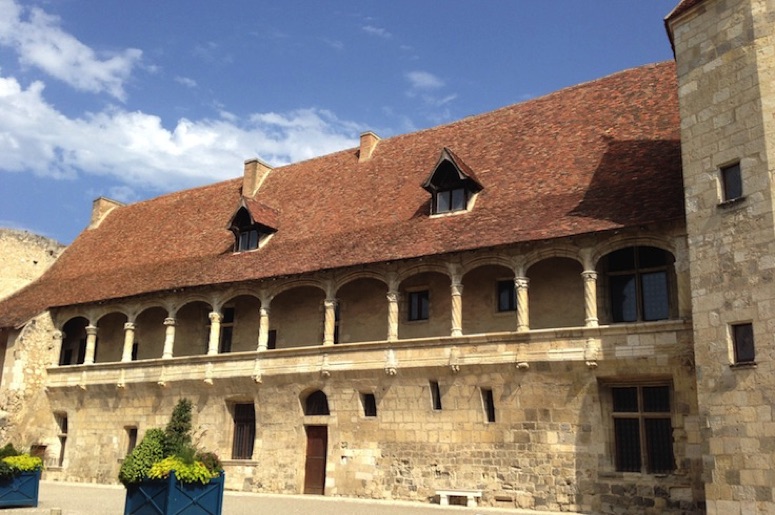
The building as it stands today is only part of what was originally built. The original palace had four wings and an internal courtyard, surrounded by a dry moat on three sides and the River Baise on the fourth side (as shown in the model on display in the palace). The wing on the left is all that remains today. The rest was demolished by the son of Henry IV in 1602 when he ascended to the throne (talk about inter-generational rivalry). The demolition took place while emissaries were away in Paris seeking an order to prevent the demolition (which they received). However, when they got back to Nerac, only one wing was left standing.
An interesting feature of the balcony above is that there are 12 columns including the two at the ends. All of the columns have fluted designs with the spiral going anti-clockwise as you ascend the column, except for the third from the left which has a clockwise spiral. Legend has it that the columns represent the 12 Apostles, with the third column representing the traitor Judas. Given the strong role that religion played in this region at that time, the story is quite possibly true.
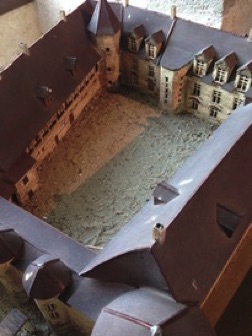
The Palace contains a wide variety of museum pieces including busts of Henry IV (bearing a striking resemblance to good friend Doug Walter from Taggerty), mosaic tile floors (some dating back to Roman times), and various pieces of furniture featuring intricately carved wooden facades (reminds me of some of the cabinets in the house at Moissac).
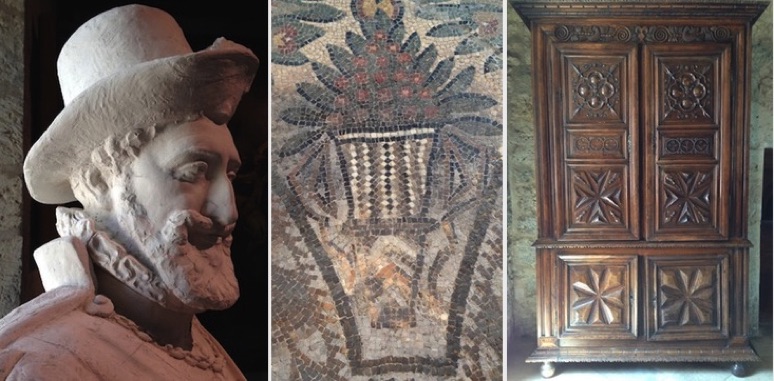
One interesting aspect of the mosaic tile patterns was that it showed that some designs have been around a long time.
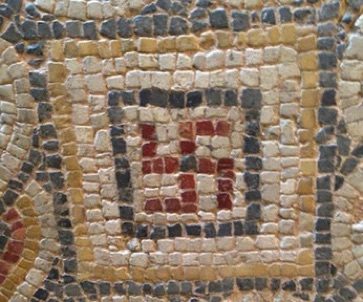
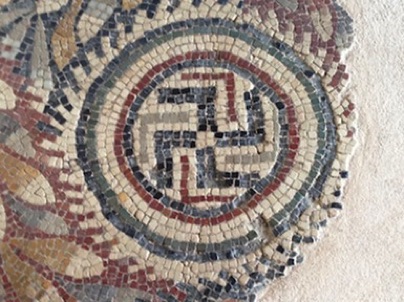
One highlight of the exhibits was a giant painting (5m wide by 3m high) taking up one wall of one of the rooms. A same-size replica hangs on the outside wall of the Palace Museum.
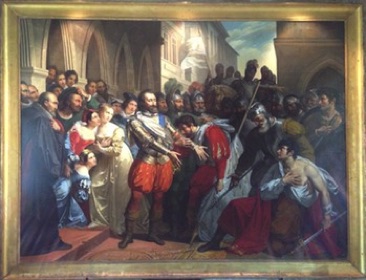
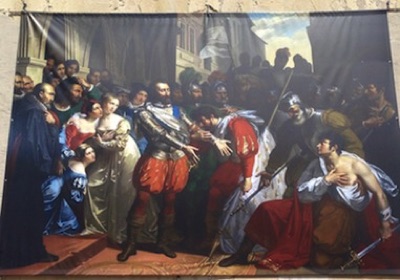
After a couple of hours wandering around the Palace, we had a cup of coffee at a little coffee bar that stands where one of the wings of the original Palace would have stood. We then decided to go for a walk in the Garenne, a long park that runs along the other side of the Baise, and which was originally the Palace Gardens in the time of Henry IV. As we crossed the bridge, we admired the church at the top of the hill above Little Madrid (what the locals called the other side of the Baise due to an influx of Spanish migration in the 19th century - they are now thinking of calling it Little Sydney due to the numbers of Australians who have bought properties in that area of Nerac!).
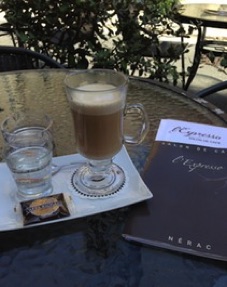
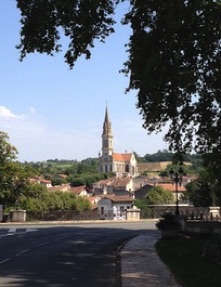
The Garenne runs for about 1.5km on the east side of the Baise and 1km on the west side. The east side is more traditional formal public gardens and walkways, while the west side was market gardens (mostly now in private ownership). It is a very pleasant walk from Nerac to the neighbouring village of Nazareth, passing many interesting features, including several fountains and the grotto and pool with the statue of Fleurette. The legend of Fleurette is that she was the young daughter of the Palace gardener, who was seduced by Henry IV (he apparently was prone to that sort of thing). Having tired of her, however, he cast her aside and in her desperation she drowned herself in the Baise. Apparently, this story gave rise to the word we now know as “flirting”.
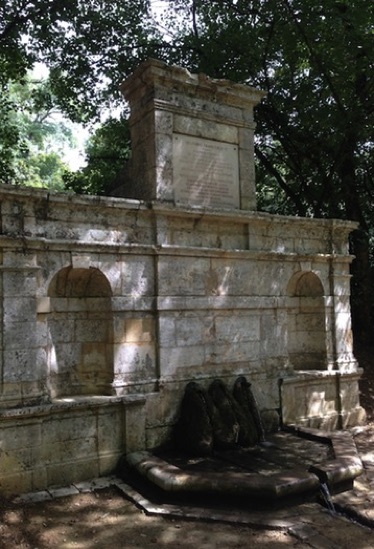
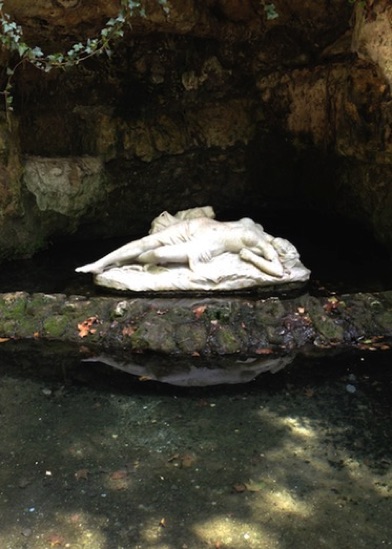
We continued our walk to the end near Nazareth, where we found an old mill that would be a handyman’s dream - however, it does need a bit of work on the floors and roof (maybe the next job for Phil Chatfield after he is finished at Coussan).
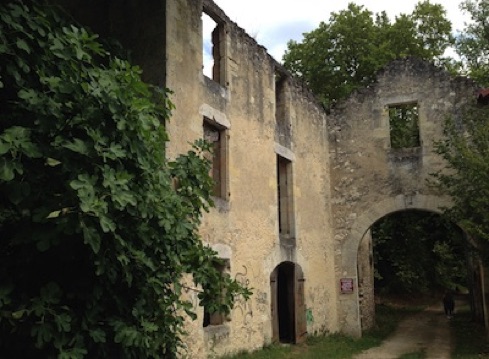
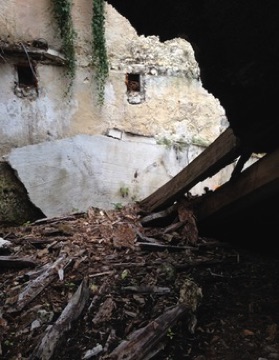
On our way back we stopped at The Chalet, a delightful eatery with adjacent bandstand. While the kitchen had just closed (it was 1415h) the chef offered to whip up a quick salad for us. It must have been good because I left not a morsel on my plate. As always, Rita got talking to them about what type of functions they host at the restaurant, and they mentioned that they often have bands where they put out picnic tables around the bandstand where people can dine and listen to the music. Naturally, the subject of steelbands was raised, and now we have another venue on our list!
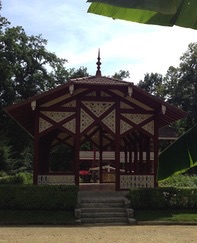
Later in the day after we had returned to the barge, the man from the Mairie (Maurice) came around to collect the mooring fees (10e per day, including power, water and showers). He was a very chatty person, and spent around 30 minutes with us, telling us about Nerac and listening to our stories about barging and steelbands. We said how much we enjoyed the Night Market the previous night, and before we’d finished we had exchanged cards and promised to let him know if the steelband ever returned to France. In return, he promised a gig in Nerac (because the Mairie, particularly him, are responsible for organising the Night Markets). As he left, he mentioned another event happening that night, with a historian guiding a night walk around Nerac. I thanked him for the tip, but didn’t think too much more about it because it seemed a bit dry.
After dinner, Rita and I decided to go for our own walk around town. However, as we were leaving the canal area, we heard the clip-clop of horses. We followed the sound to find the horses, but it turned out to be the historical walk, led by a guy in jester’s clothing, and with one of the local boys using coconut shells to make the clip-clop (sort of like the Black Knight in Monty Python). There were about 30 people following him at the time (it later swelled to about 60) and he would stop at various sites in town and describe some element of the history of the place. Even though it was all in French, I could understand some of it (with help from Rita) and could certainly appreciate his sense of humour. One of the sites he pointed out was the house in which John Calvin (of religious Calvinist fame) lived during the time of Henry IV, when great conflict was happening between the Catholics and Protestants in the area. He then took us down to the Garenne, and lit by candles held by some of the audience, he explained the history of Fleurette. We finally, after about 90 minutes, ended up at the Palace. All in all, it was a very enjoyable evening and nowhere near as “dry” as I thought it might have been.
